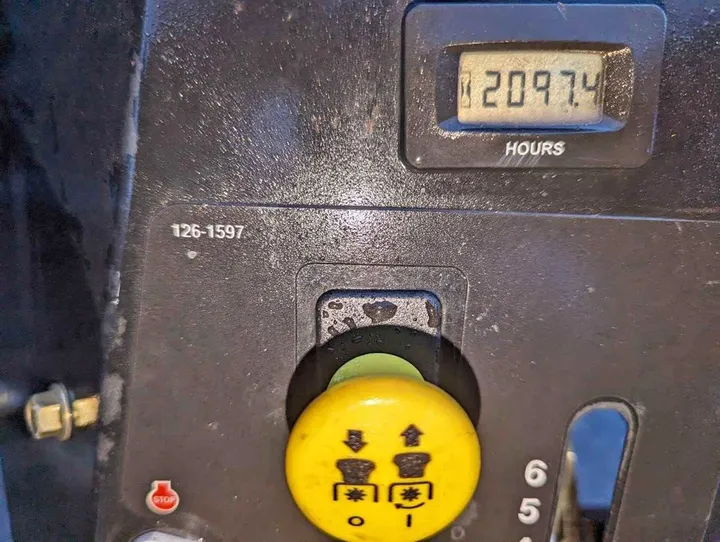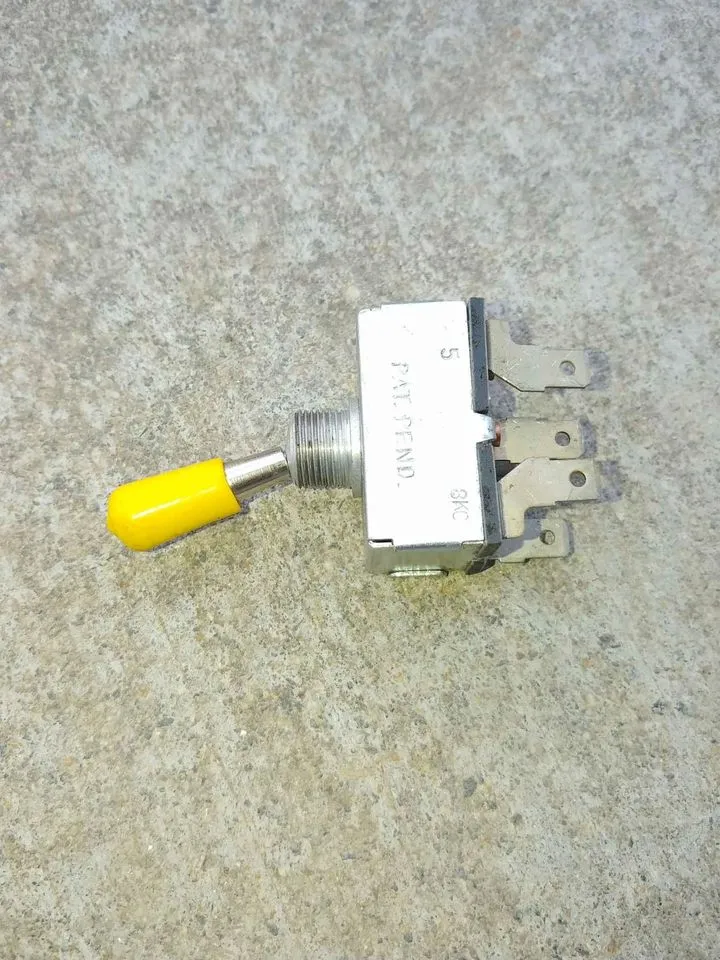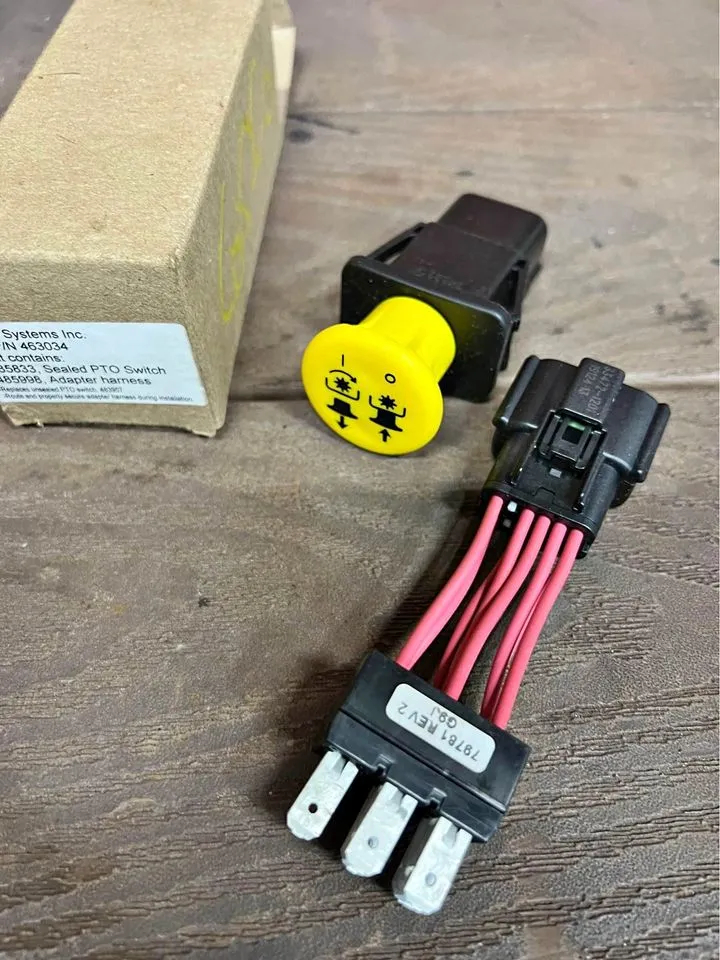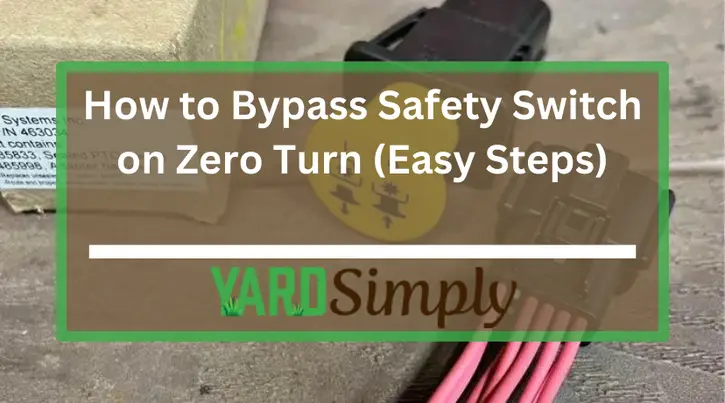As a seasoned landscaper with extensive experience in machinery maintenance, I understand the intricacies of zero turn mowers, including their safety switches.
My expertise allows me to provide you with practical advice on bypassing these switches, an action that may be necessary during certain troubleshooting or emergency scenarios.
This guide will offer concise, step-by-step instructions, emphasizing the importance of safety and the implications of bypassing these systems.
Trust in my knowledge as we delve into the essential details of this procedure.
Continue reading to ensure you are informed and prepared for such measures.
Quick Summary
- The process of bypassing safety switches on zero-turn mowers includes steps like positioning the mower on flat ground, disconnecting the battery, accessing and altering safety switches like the brake and PTO, and testing the mower post-modification.
- The guide details a step-by-step approach for bypassing various safety switches like the brake and PTO switches, underlining the importance of precise procedures.
- Consumer safety reports indicate that disabling mower safety devices significantly increases the likelihood of accidents.
- In my personal opinion, while bypassing safety switches can be necessary in certain situations, the inherent risks often outweigh the temporary convenience it provides.
How to Bypass the Brake Safety Switch on a Lawn Mower: 6 Steps
I’ll start by locating the brake safety switch, which is typically located near the brake pedal. Once I’ve found it, I’ll carefully disconnect the wires connected to the switch.
Next, I’ll use a wire stripper to expose the ends of the wires, making it easier to bypass the switch. I’ll then connect the two exposed ends of the wires together using a wire connector.
Finally, I’ll reattach the battery terminal and test the mower to ensure the bypass was successful.
After completing these six steps, I should have successfully bypassed the brake safety switch on the lawn mower.
It’s important to note that bypassing safety features can be dangerous and should only be done by those with the necessary knowledge and experience.
Step #1: Move the Mower to a Flat Ground
- Ensure the mower is on level ground to prevent unintended movement.
- Check for a flat and stable surface to avoid the mower slipping or tilting.
- Park the mower and set the parking brake for security.
- Turn off the engine and remove the key for safety.
Step #2: Disengage the Battery Terminal
- Disconnect the battery terminal before starting the bypass procedure.
- Locate the battery (usually under the seat or behind a panel).
- Use a wrench to loosen the nut securing the negative cable to the battery terminal.
- Remove the negative cable first to minimize the risk of a short circuit.
- Tuck the negative cable away from the battery to prevent contact.
Step #3: Access the Seat Safety Switch on the Mower
- Lift or remove the seat to access the mower’s internal mechanisms.
- Locate the seat safety switch, typically near the seat’s base.
- Note the position and connection of the switch for bypassing.
- The switch is designed to cut the engine if the operator is not seated.
Step #4: Pull the Safety Switch Wires
- Carefully disconnect the wires attached to the safety switch.
- Remember the arrangement of the wires for reconnection; consider taking a photo for reference.
- Gently tug on the connectors (not the wires) to avoid damaging them.
- Inspect the disconnected wires for wear or damage, setting them aside safely.
Step #5: Cut and Wrap in Tape/Crimp
- Remove the safety switch wires, preparing to bypass the brake safety switch.
- Cut the necessary wires, then strip the ends to expose the metal conductors.
- Twist the exposed wire ends together for a tight connection.
- Insulate the connection using electrical tape or use crimp connectors for a more secure connection.
- This step is crucial for both the functionality of the mower and safety.
Step #6: Put the Seat Back and Test the Mower
- After securing the wire connections, reposition the mower seat to its original place.
- Ensure the newly configured wires are not disturbed.
- Start the mower to test the functionality of the bypass.
- Check for any unusual sounds or behaviors, then engage the blades to ensure proper operation.
- Proceed with caution, acknowledging that bypassing safety features is a temporary solution.
How to Bypass the PTO Safety Switch in 3 Steps
I’m about to explain how you can bypass the PTO safety switch on your zero turn mower in just three simple steps.
First, I’ll show you how to locate the PTO safety switch, which is crucial for the process.
Then, we’ll go through cutting the wire and connecting the ends, but keep in mind, I’ll also cover some important safety tips to ensure you’re doing this responsibly.
Step #1: Find the PTO Safety Switch

- Locate the PTO safety switch, usually near the mower’s base or under the seat.
- Turn off the mower and remove the key to prevent accidental starts.
- Carefully inspect the area to find the switch, a small plastic component in the mower’s wiring harness.
- Understanding the switch’s connection is crucial for a safe and successful bypass.
Step #2: Cut the Wire
- After finding the PTO safety switch, cut the wire connecting it to the mower’s electrical system.
- Ensure the mower is off and the key is removed before cutting.
- Use wire cutters to snip the wire, leaving enough slack for future reconnections.
- Cut cleanly to avoid shorts or electrical issues.
Step #3: Connect the Ends
- Connect the cut wire ends to bypass the switch.
- Use a butt connector to securely join the wires.
- Strip the insulation off the wire ends and insert them into the connector.
- Crimp the connector for a solid connection, ensuring there are no loose connections.
- Test the connection by gently tugging the wires to ensure they are secure.
Safety Tips and Reminders
Before discussing how to bypass the PTO safety switch, it’s critical to highlight the importance of proceeding with caution and understanding the risks involved.
Safety switches are there for a reason; they’re designed to protect you from potential harm. Tampering with these devices can lead to unexpected accidents or injuries.
If you’re not experienced with electrical systems or the mechanics of your mower, it’s best to seek professional help.
How to Properly Test the Riding Lawn Mower’s Safety Switch
To ensure your riding lawn mower operates safely, it’s crucial to regularly test the safety switch. I’ve found that a systematic approach works best when checking this component.
Firstly, I make sure the mower is on a flat surface and turned off. Then, I sit in the seat and turn the key to the ‘ON’ position without starting the engine.
Next, I engage the safety switch mechanism—often by lowering the cutting deck lever or engaging the parking brake—and then attempt to start the engine.
If the mower doesn’t start, that’s a good sign; it means the safety switch is functioning properly as it should prevent the engine from firing up under these conditions.
However, if the engine does start, I know there’s an issue with the safety switch. In this case, I take the time to inspect the switch connections for any corrosion, loose wires, or damage.
I always follow the manufacturer’s troubleshooting guide, which is specifically tailored to my mower’s model.
It’s better to address any issues immediately rather than risking an unsafe operation, and I never bypass the safety features for convenience. Safety always comes first in my book.
What are the Other Safety Switches + How to Bypass Them

Now that we’ve covered how to test a safety switch, let’s turn our attention to the other types of switches you’ll encounter, such as the brake and reverse switches.
I’ll show you not only where these switches are located but also the steps to bypass them if necessary.
It’s crucial to remember, however, that bypassing safety features should only be done with a clear understanding of the risks involved.
Brake Switch
Apart from the brake switch, zero turn mowers typically feature several other safety switches, such as seat, PTO (Power Take-Off), and control arm switches, all of which can be bypassed with specific methods for maintenance or troubleshooting purposes.
Each switch forms part of an interlock system designed to ensure the operator’s safety.
If I’m dealing with a seat switch, I’ll locate it underneath the seat and disconnect it to bypass.
For the PTO switch, which prevents the blades from spinning when not engaged, I’ll find the wiring harness and create a jumper to override it.
Lastly, bypassing the control arm switches requires me to locate them near the control levers and disconnect or jump them similarly.
Reverse Switch
While discussing safety switches on zero-turn mowers, it’s essential to address the reverse switch, which prevents the mower from operating the blades while reversing and can be bypassed for troubleshooting.
Other safety switches include the seat, PTO (Power Take-Off), and parking brake switches. Each serves a critical function, like ensuring the operator is seated or that the PTO is disengaged when starting the engine.
To bypass the reverse switch, I locate it near the gear shift or under the seat, disconnect the wires, and join them together, usually with a jumper wire.
It’s a temporary fix, not for everyday use, and I must remember to reverse the bypass once I’m done to maintain safety during regular operation.
What Happens When You Bypass the Safety Switches?
I’ve come to understand that bypassing the safety switches on a zero turn mower isn’t just a matter of convenience; it’s a risky move that can have serious consequences.
Without these safeguards, you’re more vulnerable to accidents that can cause injury or even be fatal.
It’s clear to me that the trade-off for a little time saved isn’t worth the potential for harm.
Risks and Safety Hazards
Bypassing a zero turn mower’s safety switches can lead to severe injuries or even fatalities if the machine operates unexpectedly.
These switches are there for a reason; they’re like silent guardians ensuring that if I’m not in the proper position or if something’s amiss, the mower won’t start or will shut down.
I’ve read enough stories about zero turn mower accidents to know that tampering with these safety features is like playing with fire.
It’s not just about me either; if someone else uses the mower and isn’t aware that the safety mechanisms are disabled, the consequences could be dire.
I’ve got to remember that no amount of saved time is worth risking my wellbeing or that of others. Safety switches are lifesavers, and I respect their role in my protection.
Related: Danger of Zero Turn Mowers: Facts
Detailed Explanation of Safety Switch Functions

Zero turn mowers are equipped with various safety switches, each designed to perform a specific protective function.
The seat switch, usually found under the seat, interrupts the circuit when the operator leaves the seat, ensuring the mower does not run unattended.
The Power Take-Off (PTO) switch, located near the PTO clutch, prevents the blades from operating when disengaged. The brake switch, typically situated near the brake pedal, is designed to interrupt the circuit when the brake is not engaged.
Lastly, the neutral switch, found near the gear shift, ensures the mower does not start unless in neutral. Understanding the unique role of each switch helps operators appreciate their importance in maintaining safety during mower operation.
Specific Risks Associated with Each Safety Switch
Bypassing different safety switches on a zero-turn mower carries distinct risks.
For instance, disabling the seat switch can lead to the mower operating without the operator, posing a significant hazard.
Bypassing the PTO switch could result in the blades running unexpectedly, increasing the risk of injury.
Similarly, overriding the brake switch might lead to uncontrolled movement of the mower, and tampering with the neutral switch can cause the mower to start unexpectedly.
These scenarios highlight the critical nature of each switch in preventing specific types of accidents and underline the importance of adhering to safety protocols.
Legal and Ethical Considerations
While the technical aspects of bypassing safety switches on zero turn mowers might be straightforward, it’s crucial to consider the legal and ethical implications.
Bypassing these switches can void the warranty and potentially lead to legal issues, especially if an accident occurs as a result.
For professionals in landscaping or those employing others, modifying equipment to bypass safety features raises significant ethical concerns.
It not only endangers the operator but also sets a precedent of neglecting safety standards, which can have legal ramifications and impact the trust and reliability perceived by clients and employees.
Our Verdict
In my journey as a landscaper, I’ve learned that safety is paramount, especially when it comes to zero turn mowers. In my experience, while bypassing safety switches might seem like a quick fix for certain issues, it’s a practice laden with risks.
These switches are not just mechanical parts; they’re guardians that ensure our safety. Through this guide, I’ve shared insights and steps for bypassing these switches, but I urge you to proceed with the utmost caution.
Always remember, the convenience of bypassing these switches is minuscule compared to the safety they provide. In landscaping, as in life, it’s always better to err on the side of caution.
So, while I’ve provided you with the knowledge to bypass these switches, I strongly advise keeping safety your top priority. Your well-being is invaluable, and that’s a principle I stand firmly by.
Frequently Asked Questions
Are there legal implications or warranty voidance issues associated with bypassing safety switches on zero turn mowers?
I’m aware that tampering with a mower’s safety switches can lead to legal trouble and often voids the warranty. It’s best to consider the potential risks before making any modifications.
Can bypassing safety switches on a zero turn mower affect my insurance coverage in the event of an accident or injury?
I’m concerned that tampering with my mower’s safety features could impact my insurance coverage if there’s an accident. It’s crucial to check with my insurer before making any modifications.
What are the long-term effects on the mower’s performance and durability if i choose to bypass the safety switches?
Bypassing safety switches may lead to increased wear and tear on my mower, potentially reducing its lifespan and causing unforeseen mechanical issues that could have been avoided with the safety features intact.
Are there any ethical considerations i should be aware of before bypassing safety switches, especially if i employ workers who will use the equipment?
I’m considering the ethical implications of modifying equipment that others use. It’s crucial to ensure their safety and that I’m not compromising legal responsibilities or setting a negligent example for my employees.
How might bypassing safety switches on a zero turn mower impact the resale value or marketability of the equipment?
Bypassing safety features on my mower could lower its resale value, as buyers often look for equipment that’s safe and intact. It might also make it harder to sell legally and ethically.


